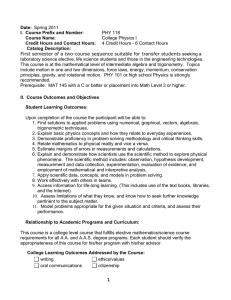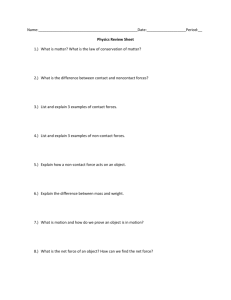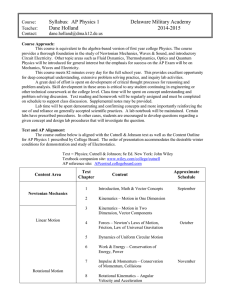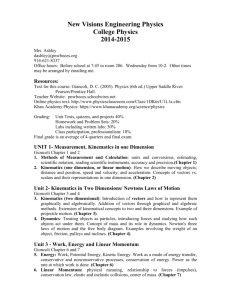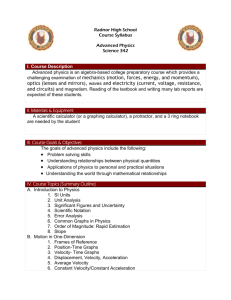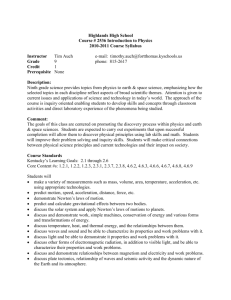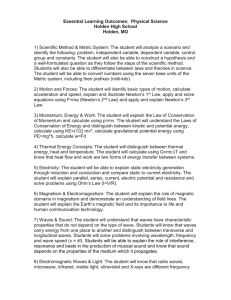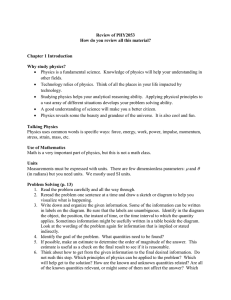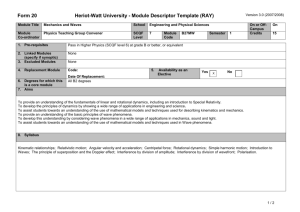AP PHYSICS B
advertisement
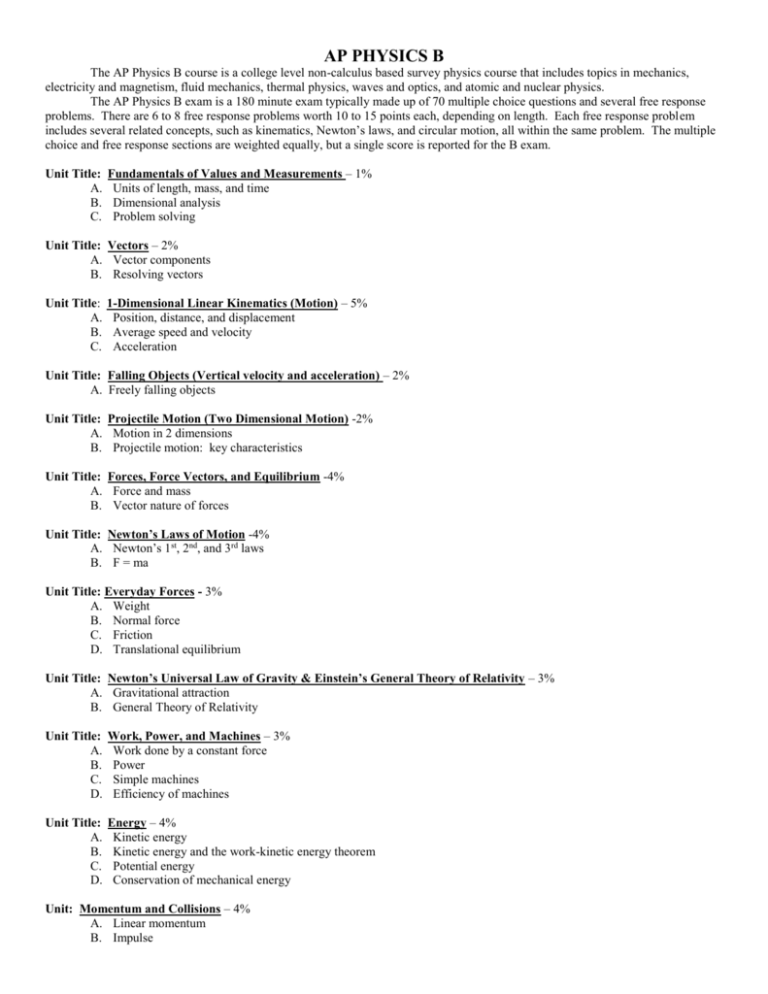
AP PHYSICS B The AP Physics B course is a college level non-calculus based survey physics course that includes topics in mechanics, electricity and magnetism, fluid mechanics, thermal physics, waves and optics, and atomic and nuclear physics. The AP Physics B exam is a 180 minute exam typically made up of 70 multiple choice questions and several free response problems. There are 6 to 8 free response problems worth 10 to 15 points each, depending on length. Each free response problem includes several related concepts, such as kinematics, Newton’s laws, and circular motion, all within the same problem. The multiple choice and free response sections are weighted equally, but a single score is reported for the B exam. Unit Title: A. B. C. Fundamentals of Values and Measurements – 1% Units of length, mass, and time Dimensional analysis Problem solving Unit Title: Vectors – 2% A. Vector components B. Resolving vectors Unit Title: A. B. C. 1-Dimensional Linear Kinematics (Motion) – 5% Position, distance, and displacement Average speed and velocity Acceleration Unit Title: Falling Objects (Vertical velocity and acceleration) – 2% A. Freely falling objects Unit Title: Projectile Motion (Two Dimensional Motion) -2% A. Motion in 2 dimensions B. Projectile motion: key characteristics Unit Title: Forces, Force Vectors, and Equilibrium -4% A. Force and mass B. Vector nature of forces Unit Title: Newton’s Laws of Motion -4% A. Newton’s 1st, 2nd, and 3rd laws B. F = ma Unit Title: Everyday Forces - 3% A. Weight B. Normal force C. Friction D. Translational equilibrium Unit Title: Newton’s Universal Law of Gravity & Einstein’s General Theory of Relativity – 3% A. Gravitational attraction B. General Theory of Relativity Unit Title: A. B. C. D. Work, Power, and Machines – 3% Work done by a constant force Power Simple machines Efficiency of machines Unit Title: A. B. C. D. Energy – 4% Kinetic energy Kinetic energy and the work-kinetic energy theorem Potential energy Conservation of mechanical energy Unit: Momentum and Collisions – 4% A. Linear momentum B. Impulse C. Elastic and inelastic collisions Unit Title: A. B. C. Rotational Motion – 2% Angular position, velocity, and acceleration Rolling motion Rotational kinematics Unit Title: A. B. C. Rotational equilibrium and dynamics. – 2% Torque Center of mass and balance Static equilibrium Unit Title: A. B. C. Simple Harmonic Motion -3% Periodic motion Oscillations about equilibrium Pendulums Unit Title: A. B. C. Properties of Waves and Wave Interactions – 5% Types of waves Wave interactions Standing waves Unit Title: A. B. C. Sound – 5% Sound waves Sound intensity The Doppler effect Unit Title: A. B. C. D. E. F. Light, Reflection, Refraction, Interference and Diffraction -5% Electromagnetic waves The electromagnetic spectrum Geometrical optics Reflection of light Lenses and refraction Interference and diffraction Unit Title: A. B. C. Heat and Thermodynamics – 8% Temperature and heat Heat transfer The laws of thermodynamics Unit Title: A. B. C. D. . Unit Title: A. B. C. D. Fluid Mechanics – 5% Density Pressure Static equilibrium Fluid flow Unit Title: A. B. C. Subatomic Physics – 10% Atomic physics Nuclear physics and nuclear radiation Quantum physics Electric Forces, Current and Resistance, Circuits, and Magnetism – 18% Electric charges, forces and fields Electric potential Electric current and DC circuits Magnetism
